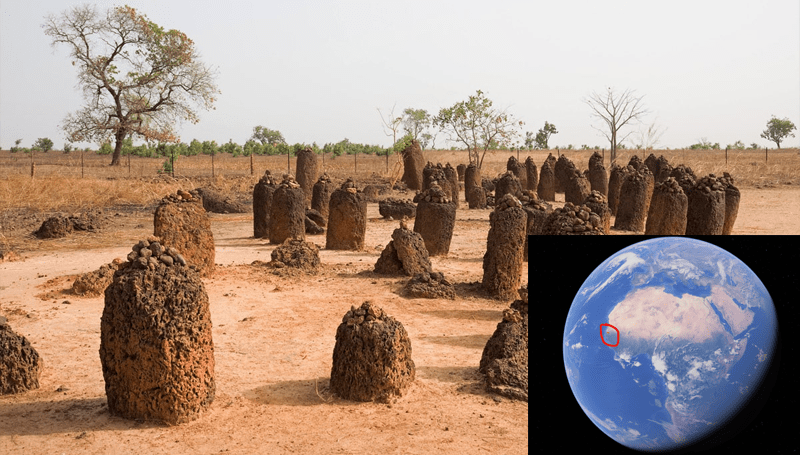The Ancient Legacy: Mysteries of 1500 years old Stone Circles of Senegal
The Stone Circles of Senegal, specifically the Wassu Stone Circles, are a remarkable archaeological site located in the central part of Senegal, in the village of Wassu. These stone circles are part of a larger group of megalithic monuments scattered across the Senegambian region, which includes parts of Senegal and The Gambia. The site is recognized as a UNESCO World Heritage site and is an important testament to the ancient civilizations that once thrived in this area.

History and Construction
The Wassu Stone Circles date back to a period estimated to be around 1,500 years ago, placing their construction in the later part of the first millennium AD. The exact purpose of these stone circles remains a subject of scholarly debate, but they are believed to have had cultural, religious, or ritual significance for the ancient people who built them.
The stones used in the construction of the circles are generally phallic-shaped monoliths made of laterite, a reddish-brown iron-rich soil that hardens over time. The stones vary in height, with some reaching several meters tall. The circles themselves are often arranged in groups, and the overall layout and positioning of the stones suggest a deliberate and purposeful design.
Significance and Cultural Context
The Stone Circles of Senegal are considered important not only for their historical and archaeological value but also for their cultural and symbolic significance. They represent a rich heritage of the ancient Senegambian civilization, which is thought to have been a complex society with advanced knowledge in areas such as agriculture, metallurgy, and social organization.
The purpose of the stone circles is not definitively known, but theories suggest that they may have served as burial sites, markers for ceremonial or religious activities, or symbols of social status and power. The megalithic monuments in the Senegambian region, including those at Wassu, are often associated with the spiritual and ritual practices of the people who lived there in ancient times.
UNESCO World Heritage Site
The Stone Circles of Senegal, including the Wassu site, were inscribed as a UNESCO World Heritage site in 2006. This recognition highlights their global importance and the need for their preservation. UNESCO acknowledges the cultural and historical significance of the stone circles and their contribution to our understanding of the development of complex societies in West Africa.

Visiting the Wassu Stone Circles
The Wassu Stone Circles are open to visitors who are interested in exploring this ancient archaeological site. The site provides an opportunity to marvel at the impressive megalithic structures and gain insights into the history and culture of the ancient Senegambian civilization.

It’s important to note that while efforts are made to preserve and protect the site, the ongoing challenge of balancing tourism with conservation requires responsible and sustainable management to ensure the longevity of these unique cultural landmarks.
Please verify this information with more recent sources, as there may have been new developments or research findings since my last knowledge update in January 2022.
Related Post
A shocking documentary proves that mermaids do exist
SHOCKING Revelation: Thuya, Mother of Queen Tiye, Was the Grandmother of Akhenaten and Tutankhamun—What Ancient Egyptian Secrets Did She Leave Behind?
Breaking News: Astonishing Discoveries at Karahan Tepe Confirm an Extraterrestrial Civilization is Hiding on Earth, and NO ONE Knows!
Breaking News: Researchers FINALLY Discover U.S. Navy Flight 19 After 75 Years Lost in the Bermuda Triangle!
NASA’s Secret Investigation: Uncovering the Astonishing Mystery of the UFO Crash on the Mountain!
Explosive UFO Docs LEAKED: Startling Proof That Aliens Ruled Ancient Egypt!